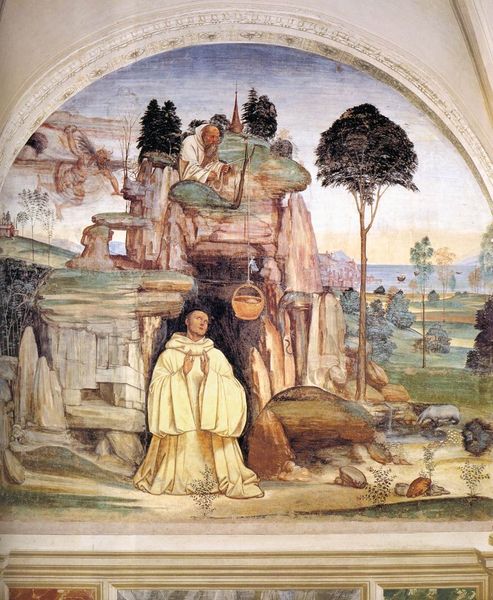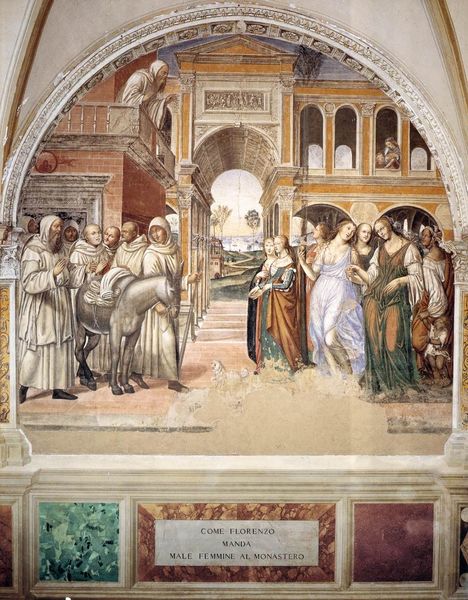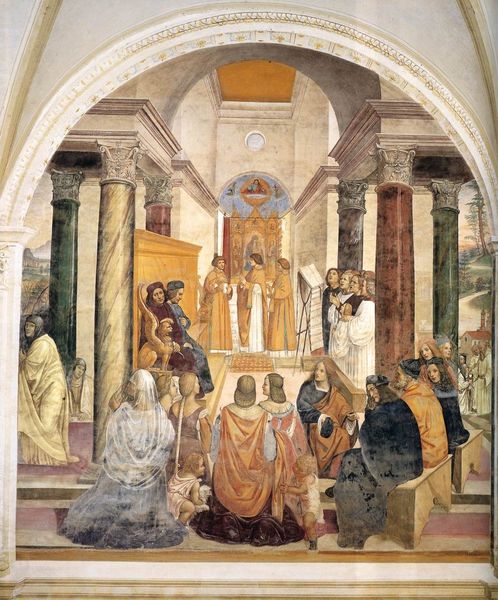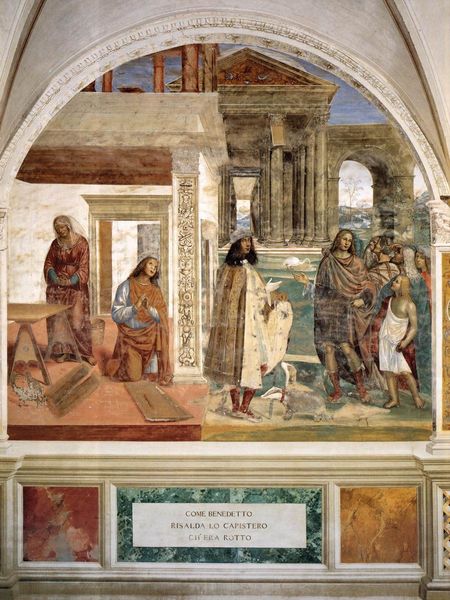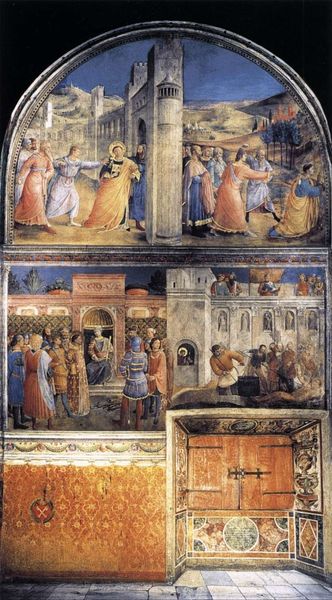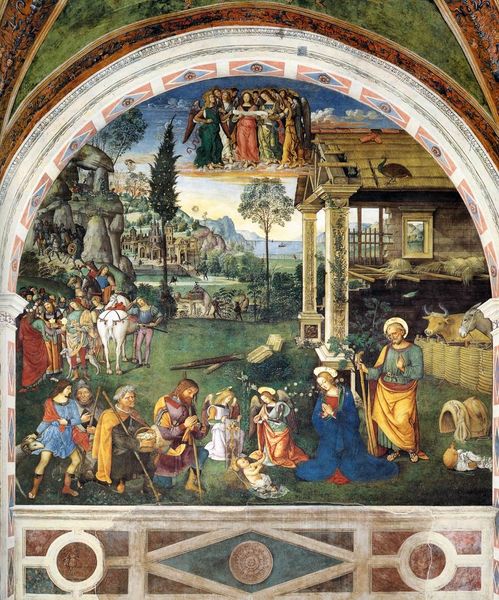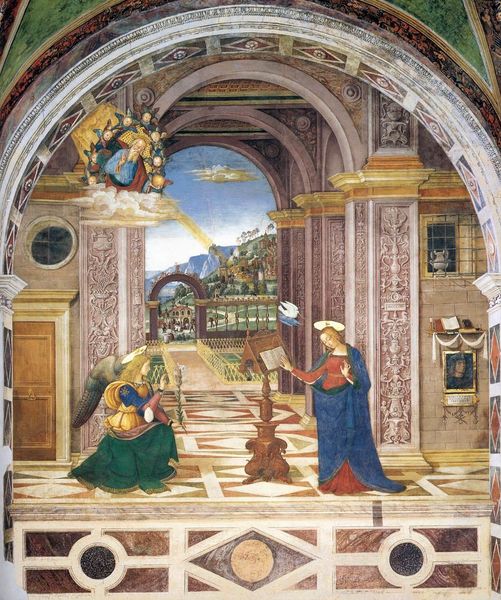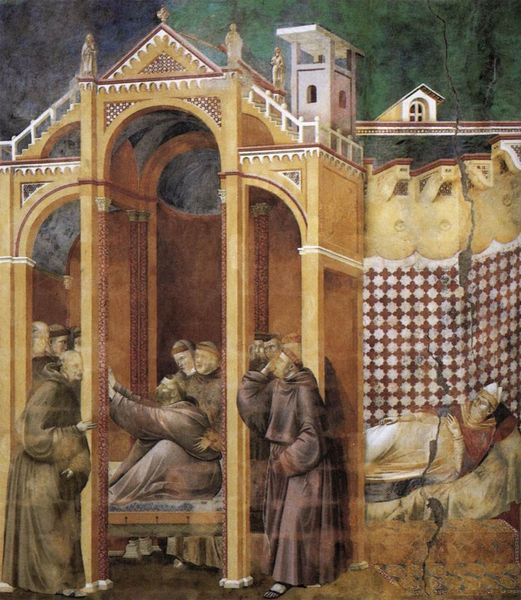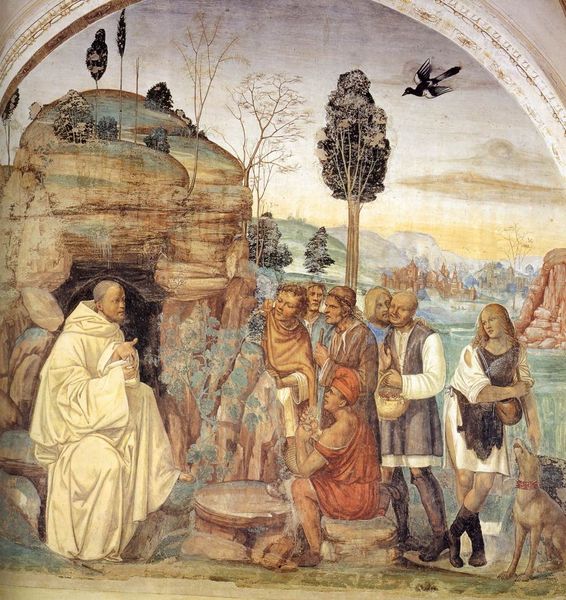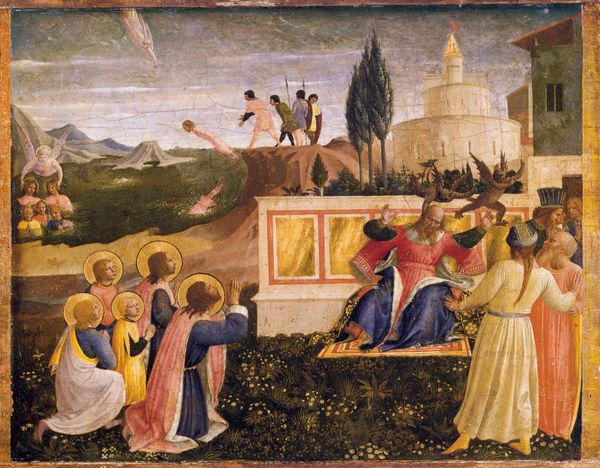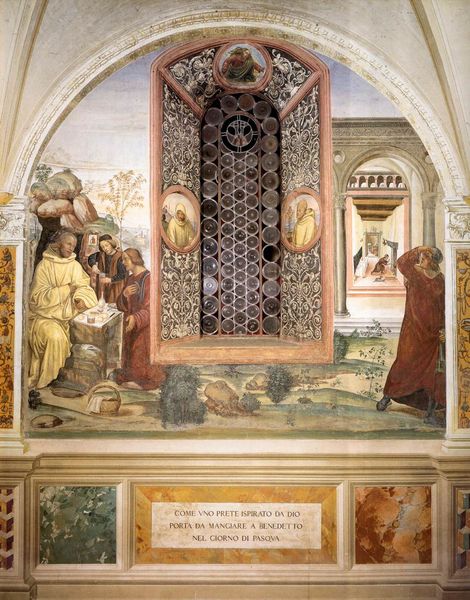
painting, fresco, architecture
#
narrative-art
#
painting
#
sculpture
#
holy-places
#
historic architecture
#
fresco
#
11_renaissance
#
traditional architecture
#
history-painting
#
italian-renaissance
#
architecture
#
historical building
Copyright: Public domain
Il Sodoma painted this fresco of the Life of St. Benedict around the early 16th century. Here, the architecture isn't just a backdrop; it's a structural language defining the scene. Note the use of linear perspective, drawing the eye deep into the composition through a series of arches and columns. The figures are arranged to complement the architecture, their placement and gestures guiding our gaze. Consider how the fresco uses geometric forms to organize space and narrative. The symmetry of the architecture, combined with the carefully balanced distribution of figures, creates a sense of order, reflecting the discipline of monastic life. Yet, this order is subtly disrupted by the dynamic gestures of the figures and the naturalistic details of the landscape in the background. This interplay between formal structure and dynamic human activity encapsulates the artistic tensions of the Renaissance and reminds us that art invites ongoing exploration and dialogue.
Comments
No comments
Be the first to comment and join the conversation on the ultimate creative platform.

